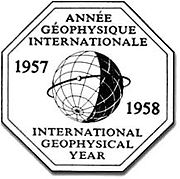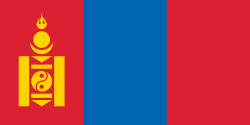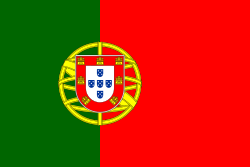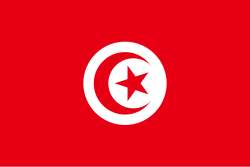Internationella geofysiska året

Internationella geofysiska året var ett internationellt naturvetenskapssamarbete under perioden 1 juli 1957-31 december 1958, då man upplevde att spänningen i världspolitiken minskat sedan Josef Stalins död 1953. Både Sovjet och USA skickade iväg sina första satelliter i samband med detta, och Van Allen-bältena upptäcktes. Dessutom gjordes framsteg i utvecklandet av teorin om plattektonik-teorin om kontinentaldriften.[1]
Deltagande länder
Källor
- Den här artikeln är helt eller delvis baserad på material från engelskspråkiga Wikipedia, 8 mars 2014.
Fotnoter
- ^ ESRL Global Monitoring Division Arkiverad 17 maj 2008 hämtat från the Wayback Machine.
- ^ Nicolet, M.. ”The International Geophysical Year 1957/58”. World Meteorological Organization. Arkiverad från originalet den 28 juli 2013. https://web.archive.org/web/20130728091015/http://www.wmo.int/pages/mediacentre/documents/Int.GeophysicalYear.pdf. Läst 28 november 2013.
Externa länkar
 Wikimedia Commons har media som rör Internationella geofysiska året.
Wikimedia Commons har media som rör Internationella geofysiska året.
Media som används på denna webbplats
The civil ensign and flag of Belgium. It is identical to Image:Flag of Belgium.svg except that it has a 2:3 ratio, instead of 13:15.
| Bolivias flagga* | |
|---|---|
| country | Template:I18n/Republic of Bolivia |
| används av | Bolivia |
| från | 1851 |
| till | Present |
| skapad av | Government of Bolivia |
| format | 15:22 |
| form | rektangulär |
| färger | röd, gul, grön
flag has 3 horizontal stripes |
| andra egenskaper | A horizontal tricolor of red, yellow and green. |
Författare/Upphovsman: Scroch, Licens: CC BY-SA 4.0
National Flag of the People's Republic of Bulgaria (1948-1968). Tha flag has got the coat-of-arms from 1948
Flag of the Federation of Rhodesia and Nyasaland
Det är enkelt att lägga till en ram runt den här bilden
Den Dominikanska republikens flagga består av ett vitt centrerat kors som sträcker sig hela vägen ut till flaggans kant. I mitten på korset sitter ett emblem med en bibel, ett gyllene kors och sex dominikanska flaggor. Emblemet är omgivet av olivkvistar och palmblad. Under emblemet står ”Republica Dominicana” och ovanför ett band med landets mottot ”Dios, Patria, Libertad” (”Gud, Landet, Frihet”).
The flag of the Ethiopian Empire with the Lion of Judah in the center
bendera Indonesia
Flag of Israel. Shows a Magen David (“Shield of David”) between two stripes. The Shield of David is a traditional Jewish symbol. The stripes symbolize a Jewish prayer shawl (tallit).
Flag of the Socialist Federal Republic of Yugoslavia (1946-1992).
The design (blazon) is defined in Article 4 of the Constitution for the Republic of Yugoslavia (1946). [1]
Flag of the Socialist Federal Republic of Yugoslavia (1946-1992).
The design (blazon) is defined in Article 4 of the Constitution for the Republic of Yugoslavia (1946). [1]
The Canadian Red Ensign, the national flag of Canada from 1957 to 1965. (see: the Canadian Red Ensign on the Register of Arms, Flags and Badges)
The Canadian Red Ensign, the national flag of Canada from 1957 to 1965. (see: the Canadian Red Ensign on the Register of Arms, Flags and Badges)
Författare/Upphovsman: Gutten på Hemsen, Licens: CC0
Flag of Norway with colors from the previous version on Commons. This file is used to discuss the colors of the Norwegian flag.
Flag of Portugal, created by Columbano Bordalo Pinheiro (1857–1929), officially adopted by Portuguese government in June 30th 1911 (in use since about November 1910). Color shades matching the RGB values officially reccomended here. (PMS values should be used for direct ink or textile; CMYK for 4-color offset printing on paper; this is an image for screen display, RGB should be used.)
Flag of Romania (24 September 1952 - 21 August 1965)

Construction sheet of the Flag of Romania as depicted in Decree nr. 972 from 5 November 1968.
- l = 2/3 × L
- C = 1/3 × L
- S = 2/5 × l
Flag of Romania (24 September 1952 - 21 August 1965)

Construction sheet of the Flag of Romania as depicted in Decree nr. 972 from 5 November 1968.
- l = 2/3 × L
- C = 1/3 × L
- S = 2/5 × l
Författare/Upphovsman: SanchoPanzaXXI, Licens: CC BY-SA 4.0
Flag of Spain during the Spanish State. It was adopted on 11 October 1945 with Reglamento de Banderas Insignias y Distintivos (Flags, Ensigns and Coats of Arms Bill)
Flag of South Africa, used between 1928 and 1982. It is identical to the 1982 to 1994 version except that the shade of blue is darker. It is also known as the "Oranje-Blanje-Blou".
Flag of South Africa, used between 1928 and 1982. It is identical to the 1982 to 1994 version except that the shade of blue is darker. It is also known as the "Oranje-Blanje-Blou".
The national flag of Kingdom of Thailand; there are total of 3 colours:
- Red represents the blood spilt to protect Thailand’s independence and often more simply described as representing the nation.
- White represents the religion of Buddhism, the predominant religion of the nation
- Blue represents the monarchy of the nation, which is recognised as the centre of Thai hearts.
US Flag with 48 stars. In use for 47 years from July 4, 1912, to July 3, 1959.
The flag of the Ethiopian Empire with the Lion of Judah in the center
Flag of former North Vietnam (from 1955 until reunification with South Vietnam in 1976)
State Flag of Venezuela 1930-2006, New flag was introduced 9 March 2006.
the "Arab Liberation" flag associated with the Egyptian officers' coup of 1952, used as the flag of Egypt from 1952 to 1958. Note: For some purposes the flag of a white crescent and three stars on green was still used until 1958.
Författare/Upphovsman: Scroch, Licens: CC BY-SA 4.0
National Flag of the People's Republic of Bulgaria (1948-1968). Tha flag has got the coat-of-arms from 1948
Författare/Upphovsman: Ingen maskinläsbar skapare angavs. Nightstallion antaget (baserat på upphovsrättsanspråk)., Licens: CC BY-SA 2.5
Flag of the Federation of Malaya.
This flag should not be confused with the flag of Malaysia. The flag of Malaya has 11 stripes and 11 spokes in the star. The flag of Malaysia has 14 stripes and 14 spokes.
Författare/Upphovsman: Oren neu dag, Licens: CC BY-SA 3.0
Flag of Colonial Kenya, between the years 1921-1963.
Flag of the Federation of Rhodesia and Nyasaland
Logo vom Internationalen Geophysikalischen Jahr



































































